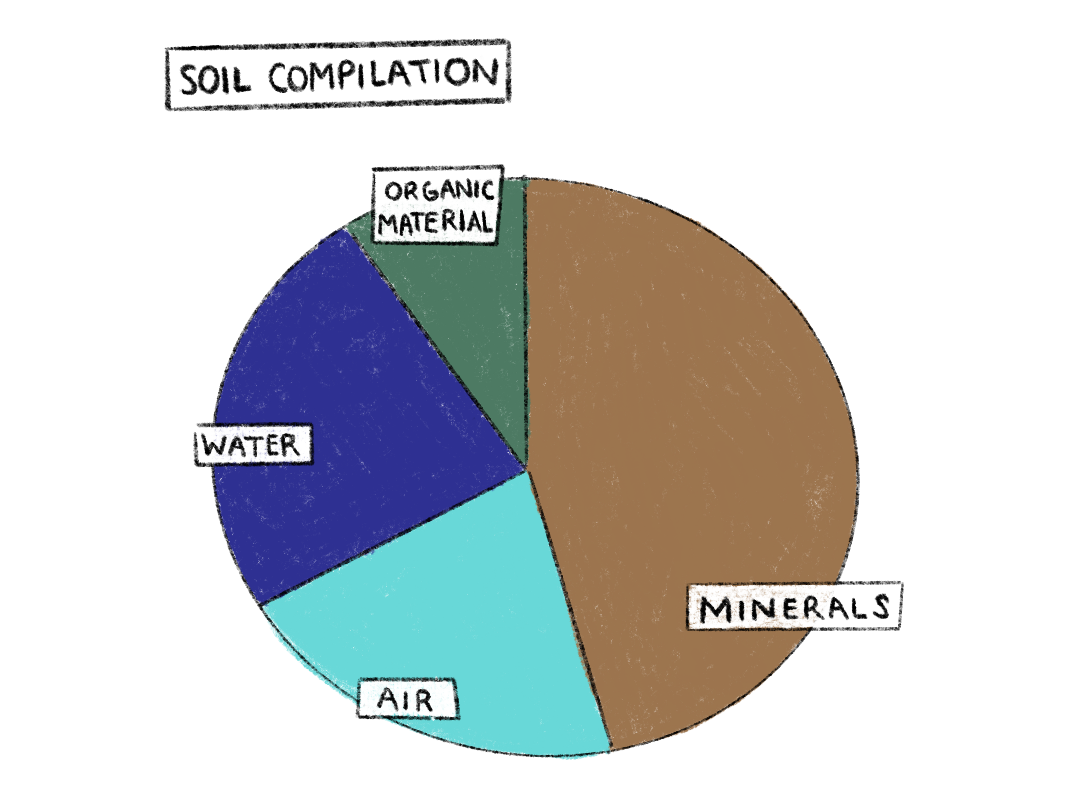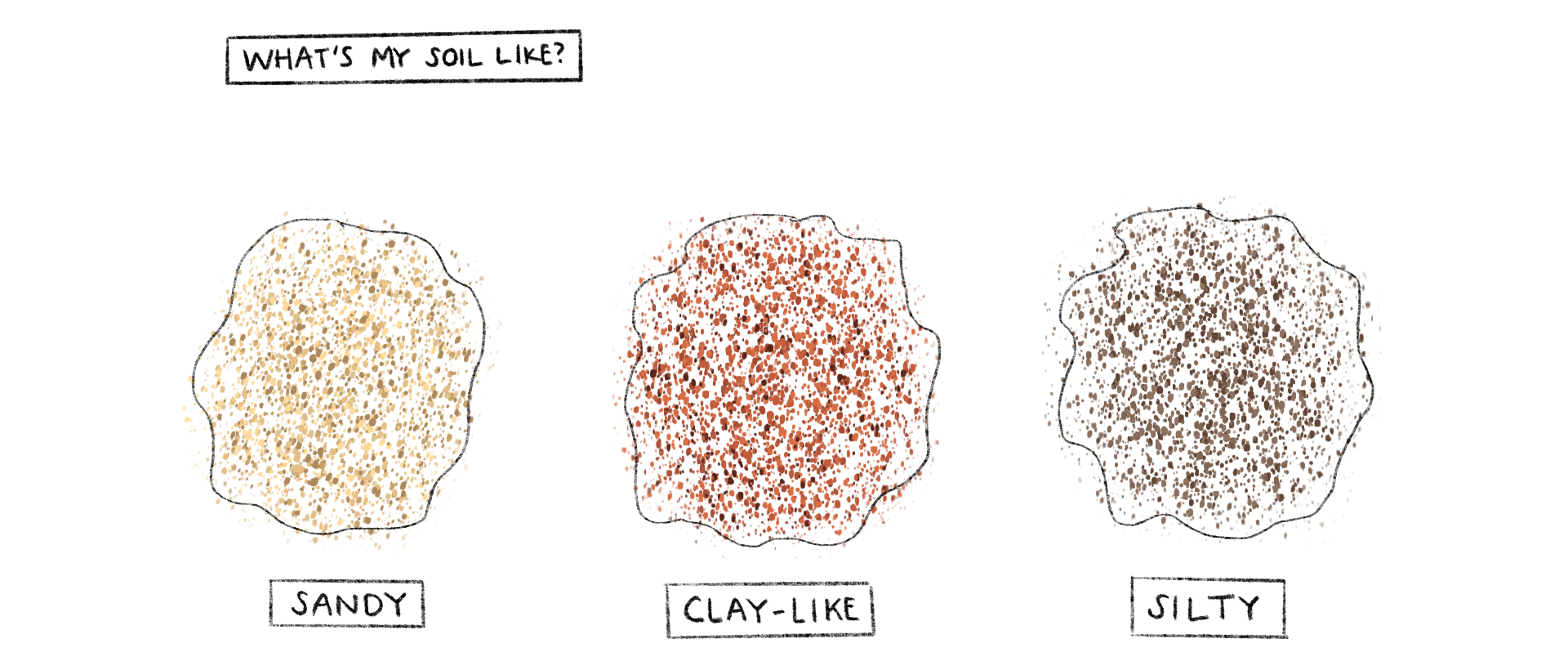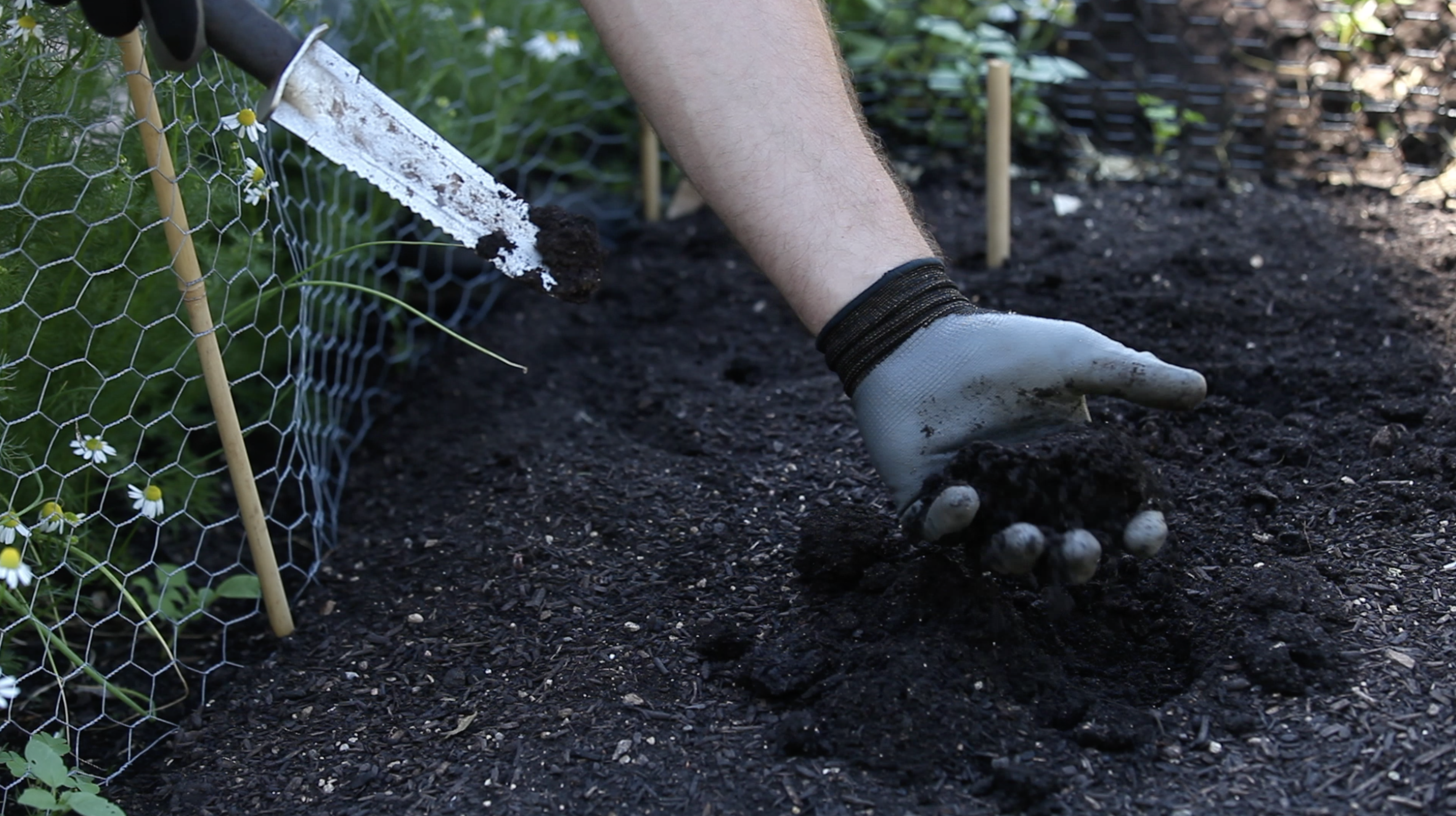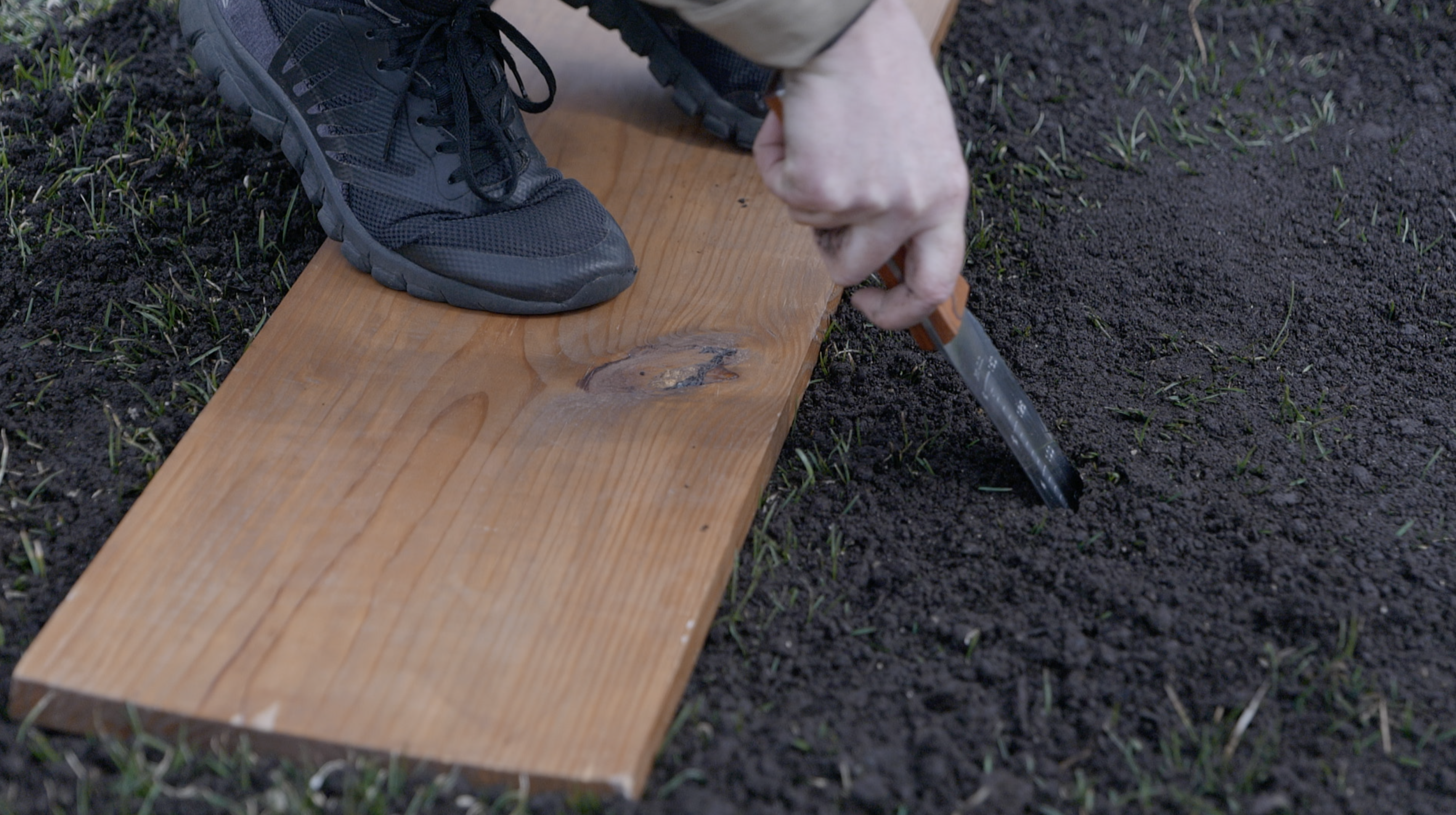Let’s Grow Stuff: What’s the Dirt on Soil
June 2, 2021 Leave a Comment
What’s the Dirt on Soil?
Confession: I love a good plant and garden pun, perhaps a little too much (if you couldn’t tell). Today we’re talking about soil and we’re only going to scratch the surface of this deep and layered topic (I did it again!).
On that note, this is perhaps the most critical thing to know about soil: it is a complex system of living and nonliving things, a vibrant community that changes substantially from one landscape to another. Soil is anything but static and stationary. Beneath the turf, soil is host to microbes, insects, fungi and small mammals constantly on the move. Most soil is composed of roughly 45% minerals (sand, silt and clay); 20-30% air, 20-30% water, and 5-10% organic matter.

The first thing most gardeners notice about their soil is the texture. Is it sandy? silty? or clay-like? Sandy soil tends to dry quickly and doesn’t hold on to water or nutrients. Silty soil has a softer texture and holds more nutrients. Clay is slippery, gummy or rock-hard, which can vary based on how wet it is. Clay holds on to nutrients well but compacts easily, which can prevent air and water circulation important for plant health.

Any soil can grow things
With this in mind, it’s time to tackle what I see as a fundamental flaw/myth in our gardening culture. I often hear gardeners refer to their soil as either good or bad, as if it’s the soil’s fault we can’t grow what we want. We’ve been trained that the “ideal good” soil is easy to dig and work in, and is high in organic matter. To achieve this, we’re told to “amend” our soil by adding additional organic matter, fertilizers, specific minerals and more. It’s true this particular soil profile is well suited to grow a number of plants, but that doesn’t make it fundamentally good, or bad, or better than anything else. I’ve personally gardened in soil from heavy clay to sand (my current home garden), and I can tell you there are plants that grow and thrive in any soil.
Soil is not an enemy to be conquered or converted. I find gardening to be far more rewarding when we choose plants based on the soil we have, rather than attempting to change our soil to grow what we want. Famed garden writer and designer Beth Chatto popularized the phrase, “Right plant, right place,” which encapsulates this idea.
A simple Google search such as, “landscaping in sandy soil,” can give us the jumpstart we need to adapt our plant choices to our soil’s conditions.
Soil and our food
The one variant to this proposition is when we’re growing food, which tends to need very specific conditions to thrive and produce a bountiful harvest (i.e. lots of nutrients and decent water-holding capacity). It’s important to know that plants will absorb whatever is in the soil they’re growing in, not only water and nutrients. If you’re growing in an urban site or near an old building, a soil test will help you know if there might be any contaminants that could be absorbed by your veggies.
Similarly, plants absorb many of the commercial herbicides and pesticides marketed for our landscapes, and we run the risk of consuming these harmful compounds at harvest time. We often reach for chemicals to solve a problem such as a pest, disease or a struggling plant. Just like our human bodies, a healthy plant is far more likely to resist pests and diseases when it’s healthy and happy to begin with. Healthy plants begin with healthy soil.
When it comes to building a healthy soil ecosystem in your garden, we take our lead from nature itself – Mother Nature had it figured out long before we started growing corn and beans and tomatoes.

Here are a few goals and good practices to keep in mind when it comes to building and supporting a healthy soil ecosystem.
- Keep your soil covered, ideally with green, living plants (i.e. green mulch). You can also add organic matter like chopped leaves, straw, grass clippings or bark. You can learn more about mulches in this episode of Let’s Grow Stuff. Covering the soil helps to prevent erosion, maintain more consistent soil moisture and reduce the possibility of unwanted plants (i.e. weeds).
- Avoid the temptation to till your soil. Tilling is no longer an accepted best practice for our gardens because we now understand it to be disruptive to the many beneficial and important organisms which live in our soil. While it may have short-term benefits like making it easier to dig and plant new plants, the long-term effects degrade soil over time.
- Do you really need fertilizer? Since plants aren’t able to absorb 100% of the fertilizer we apply to our gardens, a significant portion of it ends up in our rivers and lakes and can cause destructive algae blooms. We can think of adding fertilizer like using a bandaid to try and stop a gaping wound: it’s simply not the right tool for the job.
- If you’re growing veggies, consider cover crops. This is an extension of the first point that we should keep our soil covered, ideally with something green. Cover crops do more than simply cover the soil – many add important nutrients back into the ground from their leaves and roots. Their nutrients are released slowly over time as the cover crops decompose on-site, making this technique more stable and less prone to be washed away than synthetic fertilizers.

- Reduce soil compaction whenever possible. Everything from our lawnmowers to the boots we wear in the garden can compact soil. In some instances this compaction is unavoidable and can be remediated through something like aerating – the process of creating a series of deep, small openings in the soil throughout a particular area.
In our garden beds, an easy way to reduce compaction is through the use of old boards to create temporary walking paths. Boards help to spread our weight over a larger area and dramatically reduce compaction. Use boards that are about 6-10” wide. The length of the board can vary; choose lengths that work as pathways in your garden design.
Final tip: Avoid the temptation to walk in your garden immediately after a deep rain or watering. Water allows soil to compact more easily, and it doesn’t magically expand when it dries out. You can use the board method if you have a critical project to tackle, and waiting just 3-4 hours after watering can make a significant difference in the ability of your soil to resist compaction.
As you begin to see your soil in a new light, remember it takes time to build a healthy soil ecosystem: it won’t happen overnight. Don’t be tempted by products or solutions which claim to offer a quick fix solution, as these can often cause more damage and set you and your soil back in the long run. Building and nurturing healthy soil is a strategy that takes time, patience, and attention, and one that will pay off many times over with each passing season as your plants and soil begin to thrive and grow together in harmony.
 Passport
Passport




